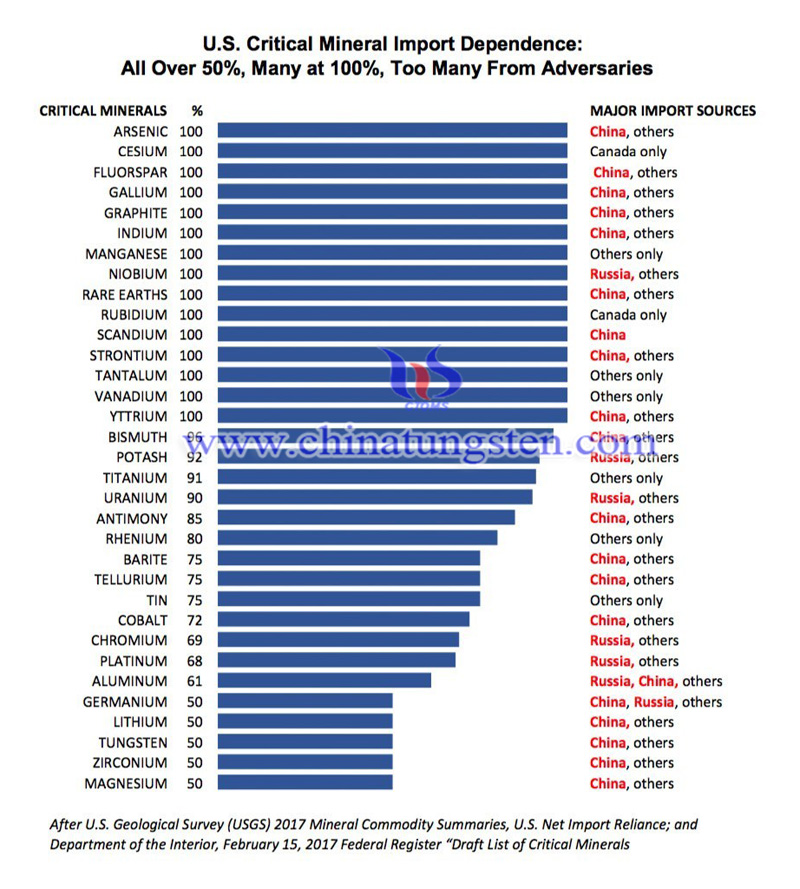Tungsten and Rare Earths - US Critical Minerals Lists
- Details
- Category: Tungsten's News
- Published on Monday, 01 July 2019 14:42
America published a new US critical minerals lists, including tungsten and rare earths, US government have expanded the number of key products on the list to 35 categories.
At present, tungsten and rare earths in US are heavily dependent on overseas markets. It is expected that US will strengthen the exploitation in its own country, and pay more attention to the construction of the domestic complete supply industry chain, but this may take a long time for them.

According to the report, Australian Linus Mining Company, an Australia's rare earths producer, the largest producer of rare earths outside China, they have signed a contract with the Texas-based chemical company Blue Line to establish a rare earths separation plant in US, trying to "fill" the key gap in the US supply chain. The joint statement of the two companies said that the Texas rare earth separation plant will launch next year, and the joint venture will be controlled by Linus Mining Company.
It is reported that the US government expanded the quantities on the “critical minerals lists” to 35 categories, and they have further realized the importance of rare metals. Rare metals are vital to the emerging US economy and national defense security.
Experts in American rare minerals industry pointed out that, the so-called critical minerals are non-fuel minerals or raw mineral materials that are heavily dependent on imports and are vital to national security and economic prosperity. Key minerals involve the supply of raw materials and present the scarcity of certain resources in the high-tech sector.

The 35 minerals in “critical minerals lists” are: aluminum (alumina), antimony, arsenic, barite, beryllium, bismuth, cesium, chromium, cobalt, fluorite, gallium, germanium, graphite (natural), hafnium, helium, indium, Lithium, magnesium, manganese, niobium, platinum group metals, potassium salts, rare earths elements, rhenium, rubidium, scandium, strontium, tantalum, tellurium, tin, titanium, tungsten, uranium, vanadium and zirconium.
According to the United States Geological Survey, 31 items of the 35 critical materials listed in the list are based on imports. The US believes that dependence on these foreign resources creates vulnerability on its economic and military strategic, and is easy effected by foreign government actions, natural disasters and other events that may interfere with the supply of key minerals.
- Tungsten Manufacturer & Supplier, Chinatungsten Online: www.chinatungsten.com
- Tungsten News & Prices of China Tungsten Industry Association: www.ctia.com.cn
- Molybdenum News & Price: news.molybdenum.com.cn
- Tel.: 86 592 5129696; Fax: 86 592 5129797; Email: sales@chinatungsten.com



 sales@chinatungsten.com
sales@chinatungsten.com